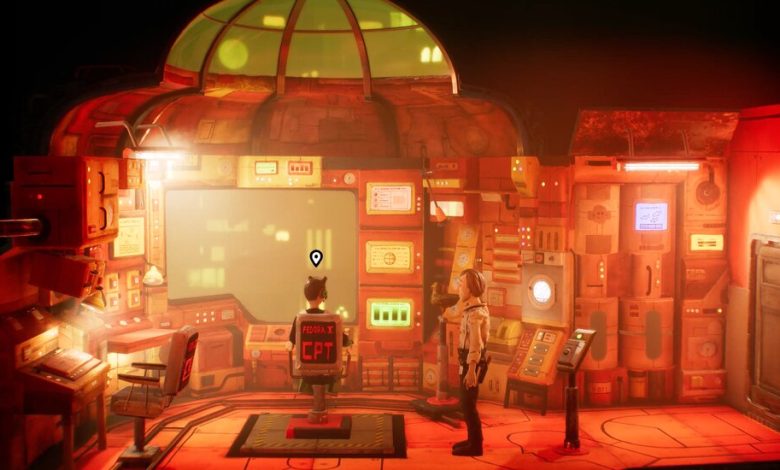A Video Game Made Out of Brick, Clay and Tenacity

A handmade video game sounds like an oxymoron, like a rock opera or a TV movie. But on rare occasions, designers choose to build their interactive worlds not from pixels and polygons but from physical materials like cardboard and clay.
For his haunting 2013 puzzle game, The Swapper, Olli Harjola sculpted sets and characters out of Plasticine and then digitized them using a technique called photogrammetry. “People were often like, ‘Wow, why did you choose this very cumbersome and complicated method of making stuff?’” Harjola said.
In fact, it was a practical decision: Harjola had no idea how to program 3-D models, so working with real stuff felt like an easier entry point into video game design. The same was true for Slow Bros., a studio in Cologne, Germany, behind Harold Halibut, which releases on Tuesday for the PC and PlayStation and Xbox consoles.
Fourteen years ago, fresh out of film school, Onat Hekimoglu had an idea for a game about a hapless janitor stuck in an undersea city on an alien planet after his ancestors fled from a calamity back on Earth. The scenes he imagined were visually ambitious, but he had no experience building things digitally. So he and his friends chose to work around the skills they did not have (coding, 3-D modeling) in favor of those they did (carpentry, sculpture, lighting, costume design).
Soon Hekimoglu, Harold Halibut’s director and designer, enlisted Ole Tillmann, who became the game’s art director and puppetmaker. Tillmann attended the Rhode Island School of Design, where his instructors had emphasized making things by hand, he said, “and then it’s up to the students to figure out the digital portion themselves.”
At a scale of 10 to 1, the game’s designers built nearly everything players see onscreen, including clay characters and adorably miniature costumes sewn from real textiles.



